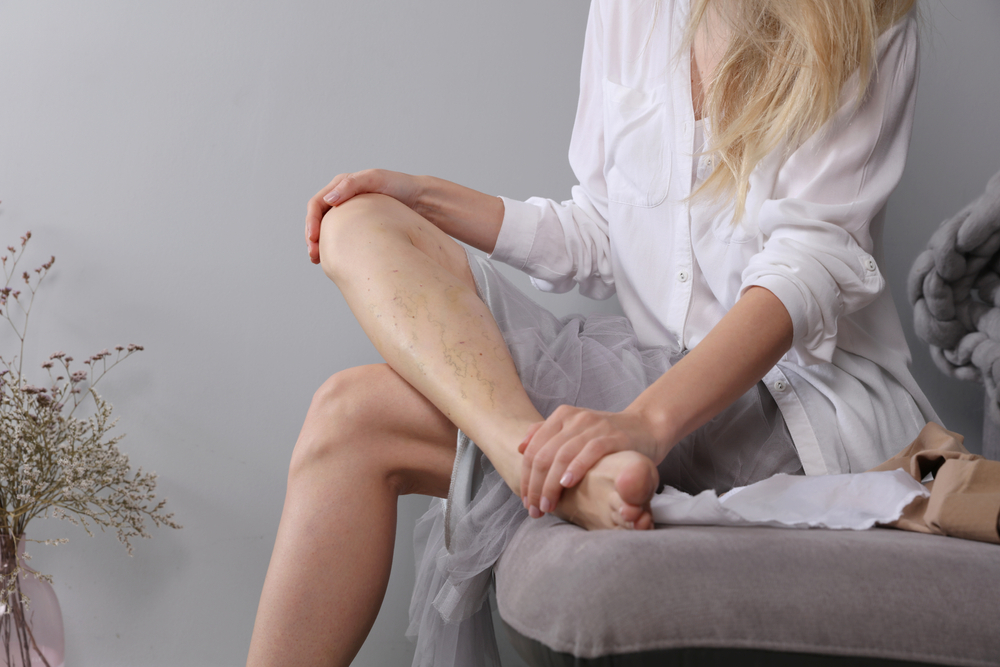Have you ever felt persistent leg pain without an apparent reason? That throbbing or heaviness might be linked to chronic venous insufficiency (CVI). Here at Shaheen Vascular, we’ve seen many patients in the Mountain View and San Jose, CA, areas grapple with this issue, and we’re here to shed some light on it. Chronic venous insufficiency can significantly impair one’s quality of life and may result in painful, uncomfortable symptoms in the legs. It is essential to understand chronic venous insufficiency, factors associated with its development, and the treatments available for dealing with it.
What Is Chronic Venous Insufficiency?
Chronic venous insufficiency is a medical condition where the veins, primarily in the legs, fail to circulate blood efficiently back to the heart. This insufficiency typically stems from damaged or weakened valves within the veins. Healthy veins have one-way valves that prevent blood from flowing backward due to gravity. When these valves become damaged or don’t function properly, blood can pool in the legs, leading to symptoms of CVI.
How Can Chronic Venous Insufficiency Further Leg Pain?
Chronic venous insufficiency can significantly contribute to leg pain. When the valves in the veins malfunction or become damaged, they allow blood to flow backward and pool in the legs. This pooling increases pressure within the veins, leading to venous hypertension.
Over time, this increased pressure can cause discomfort, a sensation of heaviness, and even throbbing or cramping pain in the affected limbs. Additionally, the accumulation of blood can lead to inflammation and swelling, further exacerbating the pain. The discomfort often intensifies after prolonged standing or sitting.
What Are the Other Symptoms of CVI?
Beyond leg pain, CVI can manifest in several ways:
- Swelling in the lower legs and ankles
- Varicose veins
- Skin changes, such as discoloration or thickening
- Itchy or flaky skin on the legs
- A feeling of heaviness in the legs
- Leg ulcers, especially near the ankle
- A tight feeling in the calves
- Restless legs
- Cramping or aching in the affected limb
- Skin that feels warm to the touch
What Are Some Treatment Options for Chronic Venous Insufficiency?
Thankfully, advancements in medicine provide a gamut of treatment options for CVI. Each of these treatments offers unique benefits, and the choice of method often depends on the specific symptoms, the size and location of the affected veins, and the patient’s overall health and preferences.
Ligation and Stripping
One of the traditional surgical methods to treat these problematic veins is vein ligation and stripping, also known as phlebectomy. In the vein ligation procedure, a small incision is made near the varicose vein, and the vein is then tied off, preventing blood flow through that particular section. This method ensures that blood can no longer pool in the problematic vein.
Following the ligation, the vein may be left in place, or if the damage is severe, the vein may undergo stripping. Another incision is made further down the leg during stripping, and the vein is removed. By removing the damaged section or the entire vein, blood flow is naturally rerouted to healthier veins, alleviating the symptoms.
Sclerotherapy
Sclerotherapy is one of the most commonly employed treatments for CVI, especially for smaller varicose and spider veins. During this procedure, a specialized solution or foam, known as a sclerosant, is injected into the affected vein. This sclerosant irritates the vein lining, causing it to swell, stick together, and eventually collapse. Over time, the treated vein fades away as the body naturally reabsorbs it. The blood circulating through this vein is rerouted to healthier veins, improving overall blood flow.
Radiofrequency Ablation (RFA)
Radiofrequency ablation (RFA) is a minimally invasive procedure for more prominent varicose veins. In RFA, a catheter is inserted into the problematic vein, typically using ultrasound guidance. Once in position, the catheter emits radiofrequency energy, which produces heat. This heat damages the vein walls, causing them to collapse and close. Like sclerotherapy, the body reabsorbs the closed vein, and blood is rerouted to healthier veins.
VeinGogh
VeinGogh is another innovative treatment that employs the principle of ohmic thermolysis. A micro-thin needle delivers high-frequency energy to the targeted blood vessels, causing them to heat up, collapse, and eventually be reabsorbed by the body. This method is particularly effective for smaller vessels and spider veins that might not be treatable with traditional sclerotherapy or RFA.
How Do You Know Which Treatment Is Right for You?
Choosing the proper treatment for chronic venous insufficiency or any vein-related issues can be a complex decision, given the variety of options available. The effectiveness of a particular treatment can also vary based on an individual’s overall health, the severity of the condition, and personal preferences.
To truly ascertain which treatment is most suitable for your specific condition, the most reliable approach is to undergo a detailed consultation with us. During this consultation, a thorough examination will provide insights into the nature and extent of your vein issues. Your medical history, underlying health conditions, and treatment goals will also be discussed. We have the knowledge and tools to guide you toward the most effective treatment for your needs.
Get Relief From Chronic Venous Insufficiency in Mountain View, CA
At Shaheen Vascular, serving Mountain View and San Jose, CA, we specialize in treating chronic venous insufficiency, which affects millions of Americans annually. If you are experiencing symptoms such as leg pain, swelling, or varicose veins, we can provide effective and compassionate care. Our treatments can help improve your circulation and overall quality of life.
Whether you choose to contact us through our online form or by calling (650) 965-1909, we look forward to serving you and helping you find relief from chronic venous insufficiency. Speak with us today to schedule your consultation and take the first step toward a healthier, more active life.




